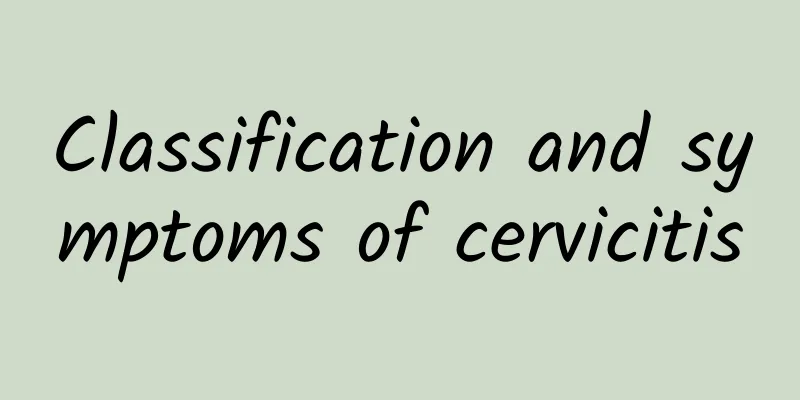Chinese patent medicine for patients with hyperprolactinemia

|
What are the Chinese patent medicines for patients with hyperprolactinemia? They don't know how to choose, which makes female friends very confused. Few women live a smooth life, most of them have ups and downs, and women regard physical illness as a kind of blame. Hyperprolactinemia is not a big problem for women if it is discovered early, but if it is discovered late, surgery must be performed. What is the best medicine for treating hyperprolactinemia? This is a question many patients want to ask. When taking medication for hyperprolactinemia, you should pay attention to the following: For simple high prolactin, add black plum, gallnut, angelica dahurica, and morning glory seed; for mixed high prolactin, add leech, earthworm, and beehive; for abdominal pain and anal swelling, add red vine, Patrinia scabra, panax ginseng, and rattan pear root; for poor appetite and greasy white tongue coating, add pinellia, arisaema, white mustard, and dried toad skin; for abdominal distension and constipation, add betel nut and change rhubarb into raw rhubarb before taking; for excessive menstrual bleeding, add calcined cuttlefish bone, madder cordifolia, and agrimony. Traditional Chinese medicine classifies hyperprolactinemia as a type of L-mass, believing that the disease is mostly caused by emotional damage, sexual overwork, or the invasion of the six external evils during menstruation and postpartum period, which leads to qi blockage, organ disharmony, and imbalance of yin and yang. Therefore, when treating it, a comprehensive and integrated analysis of the overall cause and dialectical treatment are required to truly resolve the disease. Drug treatment of hyperprolactinemia: Chinese patent medicine There are Guizhi Fuling Capsules, 3 capsules each time, orally 3 times a day, one course of treatment for 3 months. Hyperprolactinemia is one of the common gynecological diseases. It belongs to the category of syndromes and masses in traditional Chinese medicine. Clinical observations are mostly characterized by heavy menstruation, continuous bleeding, lower abdominal distension and pain, and infertility. Its main pathogenesis is qi stagnation and blood stasis, and internal obstruction of phlegm and dampness. The annotation of the good prescription for women says: Blood stasis in the abdomen of women is caused by amenorrhea or residual blood after childbirth, or wind and cold stagnation and blood stasis, which lasts for a long time and does not disappear, then it is a symptom of accumulation. The treatment is as stated in "Blood Syndrome Theory": Therefore, for all blood syndromes, removing blood stasis is always the key. While using Chinese medicine for promoting blood circulation and removing blood stasis, according to clinical symptoms, Chinese medicine for promoting qi, resolving phlegm, softening and dispersing nodules, removing swelling, removing dampness, and replenishing qi is used. Drug treatment of hyperprolactinemia Drugs for hyperprolactinemia are added or subtracted from the basic prescription. Specifically, for patients with deficiency and cold, add cinnamon, roasted ginger, and antler glue. For patients with qi deficiency, add astragalus, codonopsis, and atractylodes. For patients with blood deficiency, add cooked rehmannia, angelica, and donkey-hide gelatin. For patients with phlegm and dampness, add Yunfuling, Atractylodes, and Smilax. For patients with blood stasis, add leeches, earthworms, and zedoaria. For patients with qi stagnation, add cyperus, curcuma, and tangerine seed; for patients with stagnation and heat, add moutan bark, phellodendron, and rhubarb. For patients with severe pain, add corydalis, toosendan, frankincense, myrrh, and roasted pangolin. For patients with kidney deficiency and low back pain, add eucommia and wolfberry to the drugs for treating hyperprolactinemia. The above article is for reference only. If the drug treatment of hyperprolactinemia is not very suitable for your constitution, there is currently another treatment method that is most suitable for treating hyperprolactinemia, which is minimally invasive hysteroscopic laparoscopic treatment. Minimally invasive treatment of hyperprolactinemia is the preferred technology for women and is suitable for women who need to become pregnant again. |
<<: How to use medication in the early stage of hyperprolactinemia
>>: Hyperprolactinemia remedies
Recommend
Hospitals with good results in treating threatened abortion in China
Everyone hopes to be able to choose a suitable ho...
What are the gynecological diseases with similar symptoms to uterine fibroids? What are the symptoms of uterine hypertrophy?
Uterine fibroids are the most common gynecologica...
How big does a uterine fibroid need to be before surgery is necessary?
Some women who suffer from uterine fibroids often...
What complications does abortion cause?
What complications can abortion cause? I believe ...
What are the treatments for cervicitis?
The symptoms of cervicitis vary, mainly including...
How to completely cure cervical warts
As we all know, cervical warts can cause great ha...
What are the specific classifications of ovarian cysts?
I don’t know if most female friends know that ova...
Can I get pregnant if I have an ovarian cyst? What are the effects?
Can you get pregnant with ovarian cysts? What are...
What is pelvic effusion?
What is considered good for pelvic effusion? Pelv...
What foods should not be eaten to prevent threatened abortion
There are many women who have threatened miscarri...
Do I have to stay in bed after a painless abortion?
Do I have to stay in bed and rest after a painles...
Acute adnexitis should be treated promptly
Acute adnexitis must be treated in a timely manne...
A dietary recipe suitable for nourishing and recovering women after abortion
After an abortion, women are weaker and need to c...
Will eating sweet fruits make you fat? Nutritionist: The truth is...
Everyone knows that if you want to lose weight yo...
What medicine is best for pelvic inflammatory disease?
The choice of treatment drugs for pelvic inflamma...









